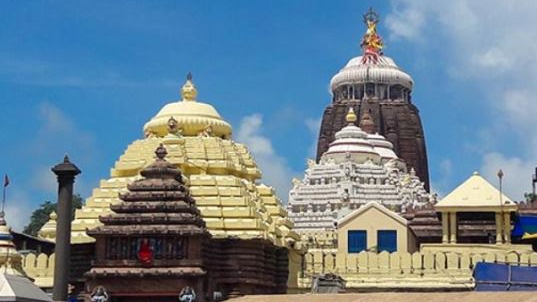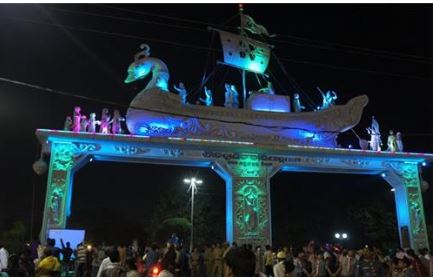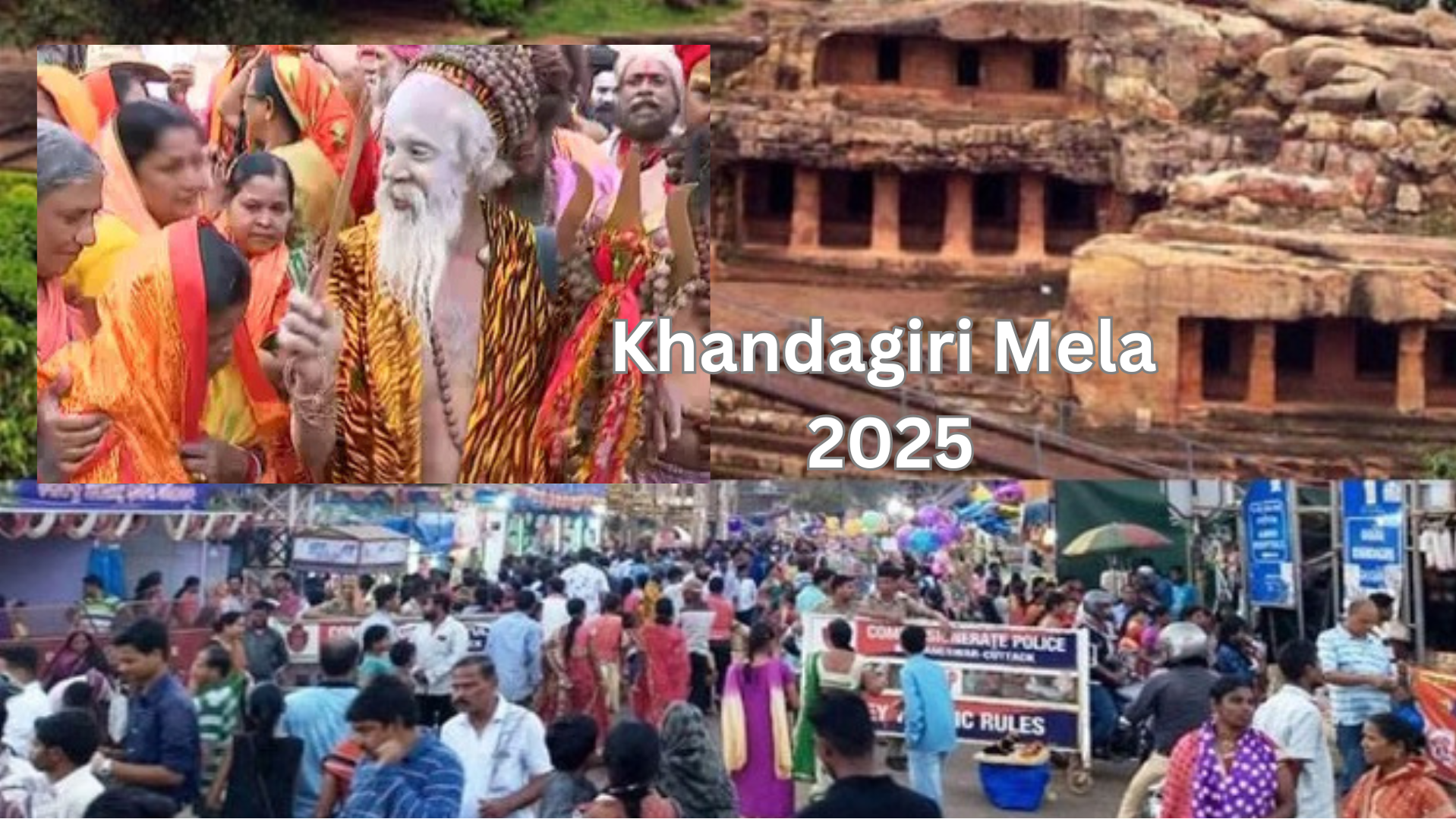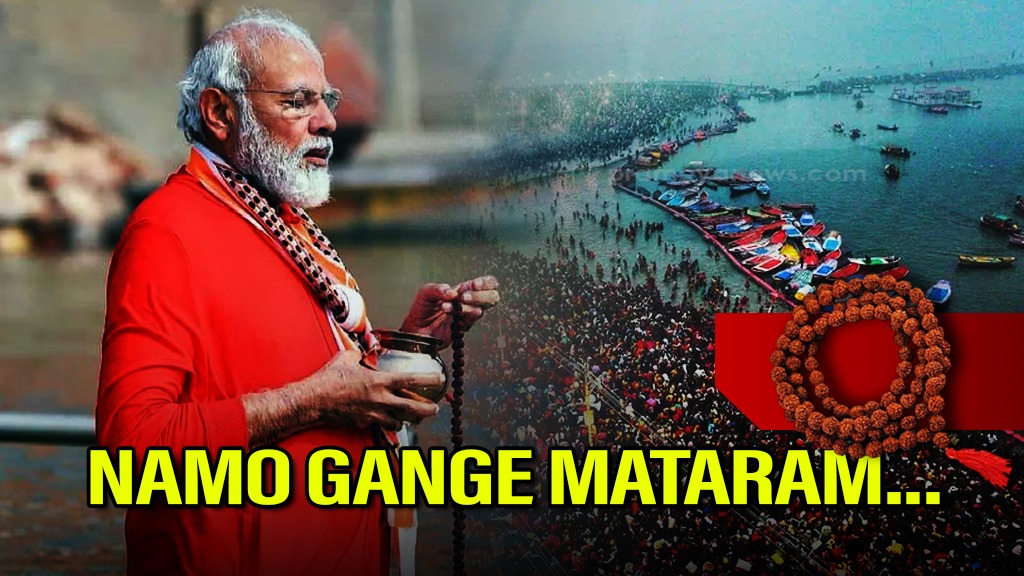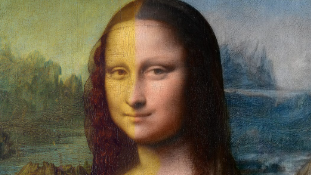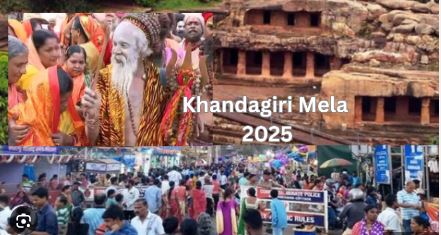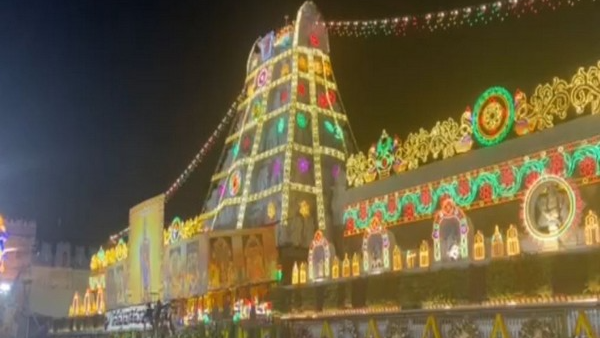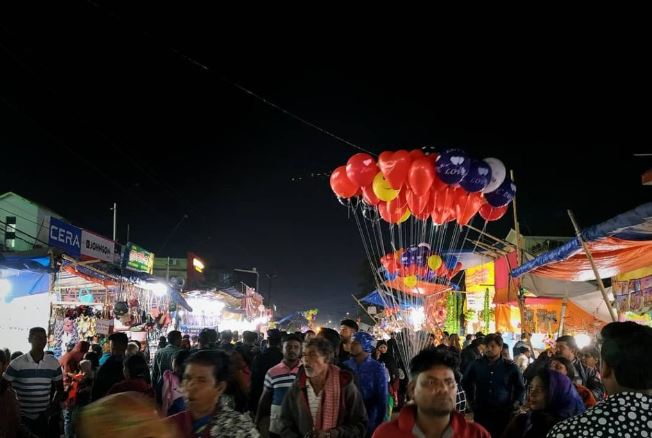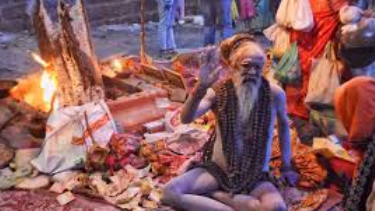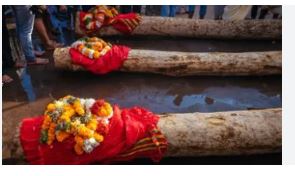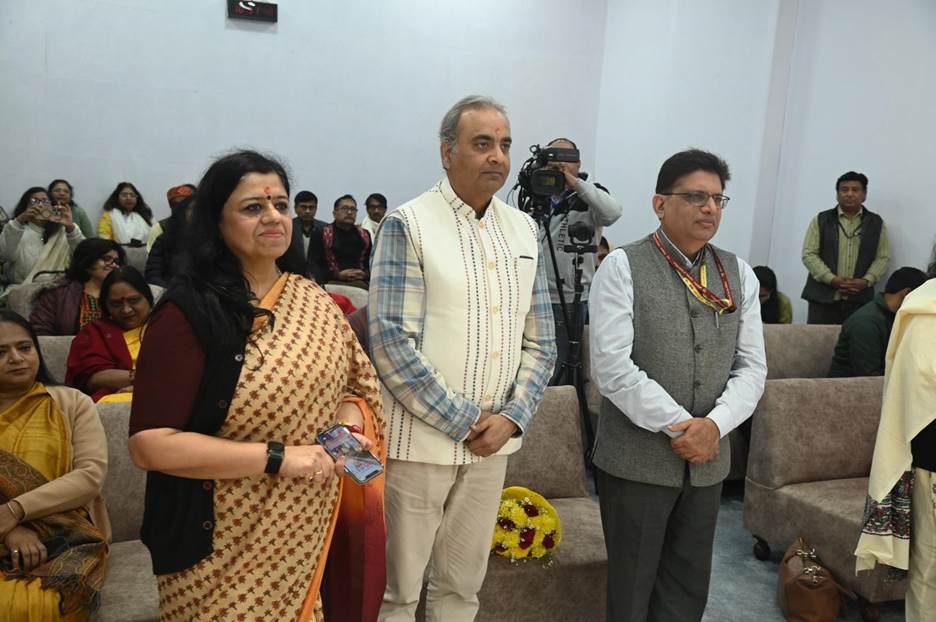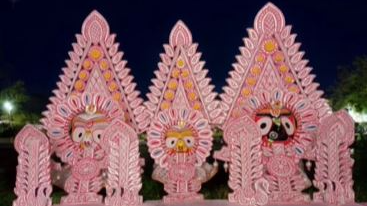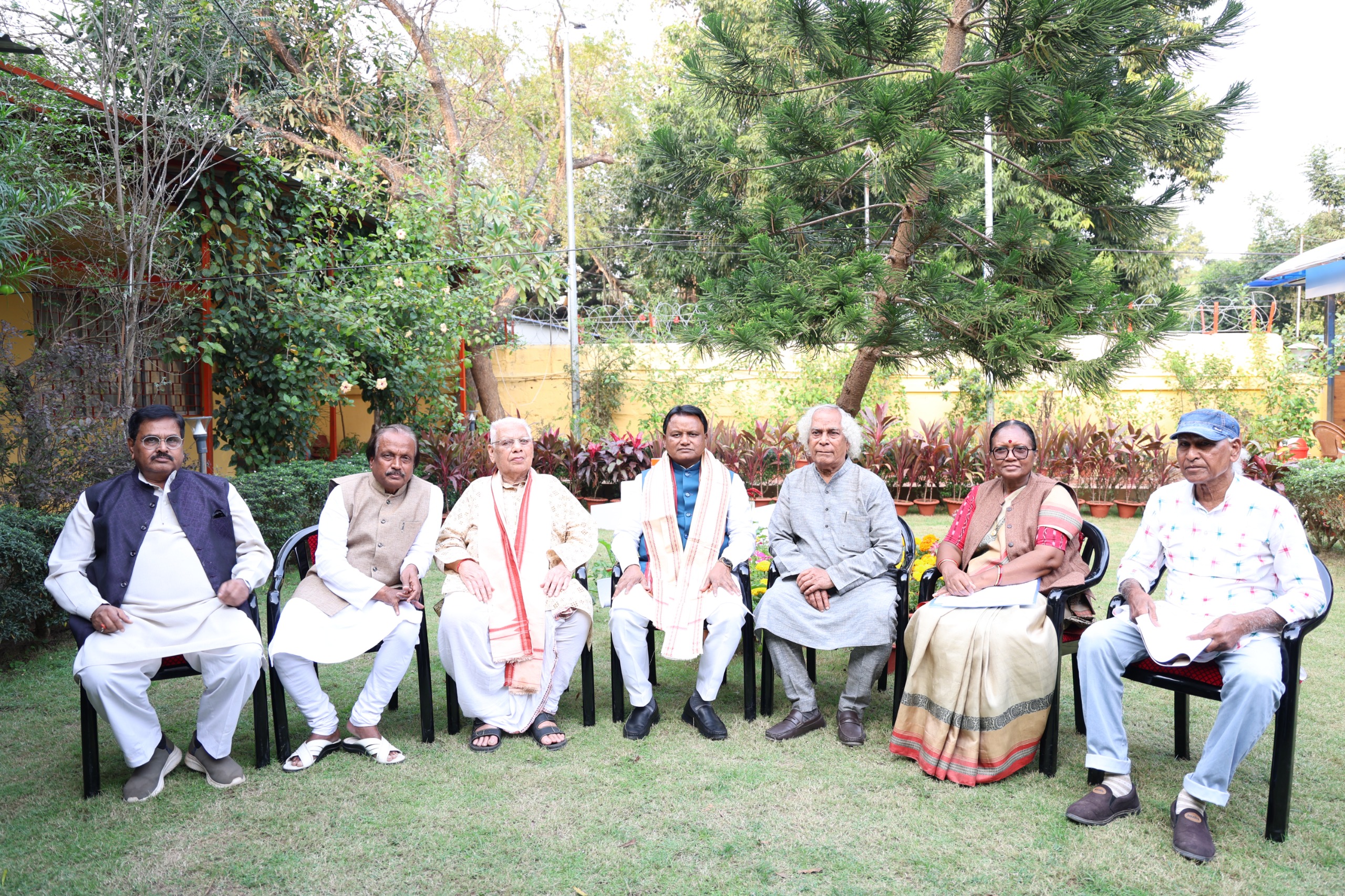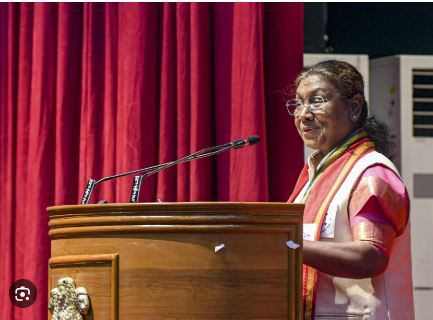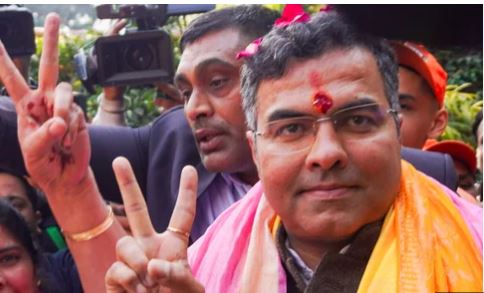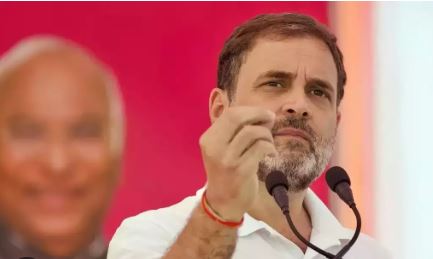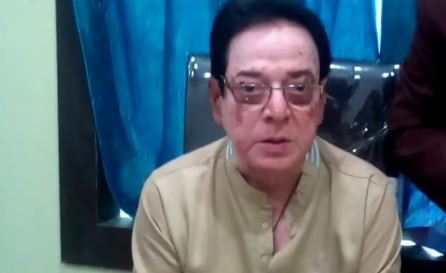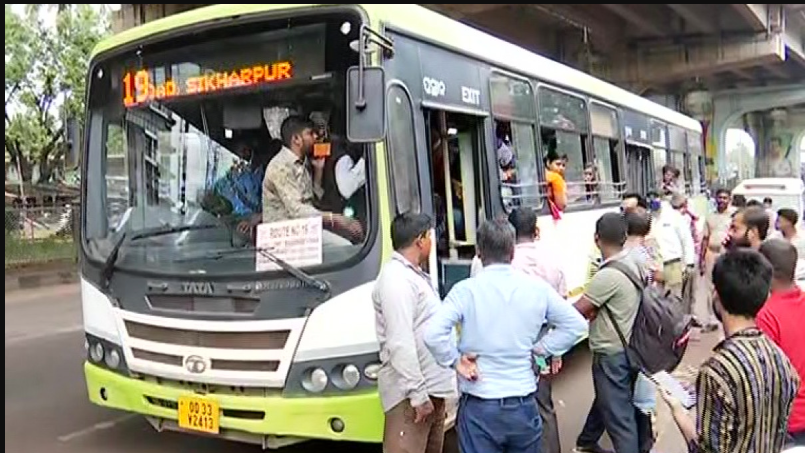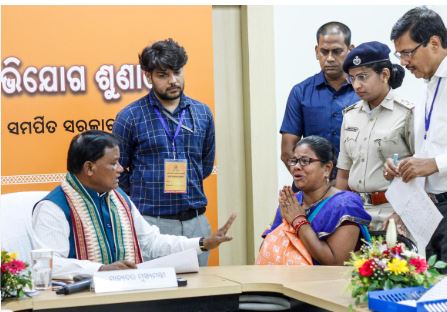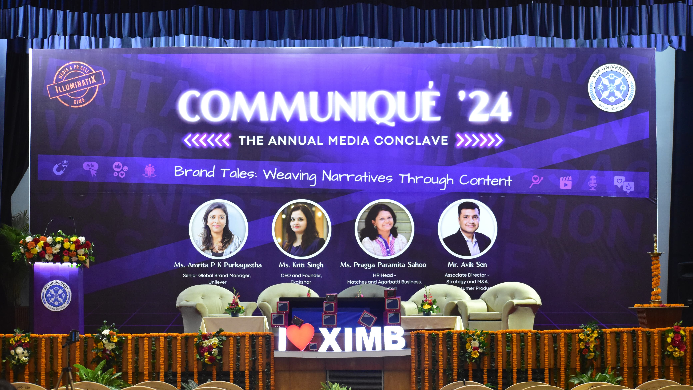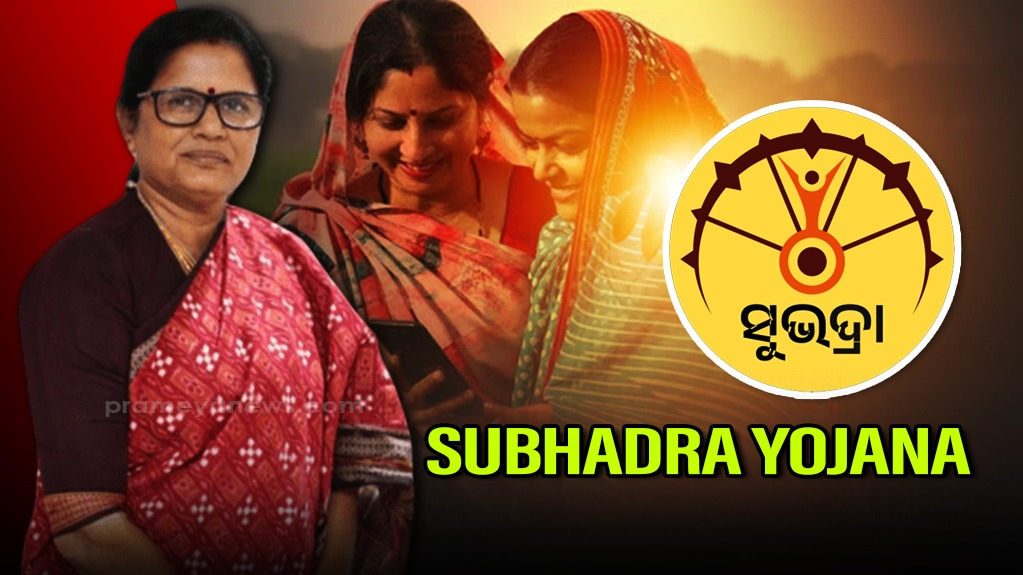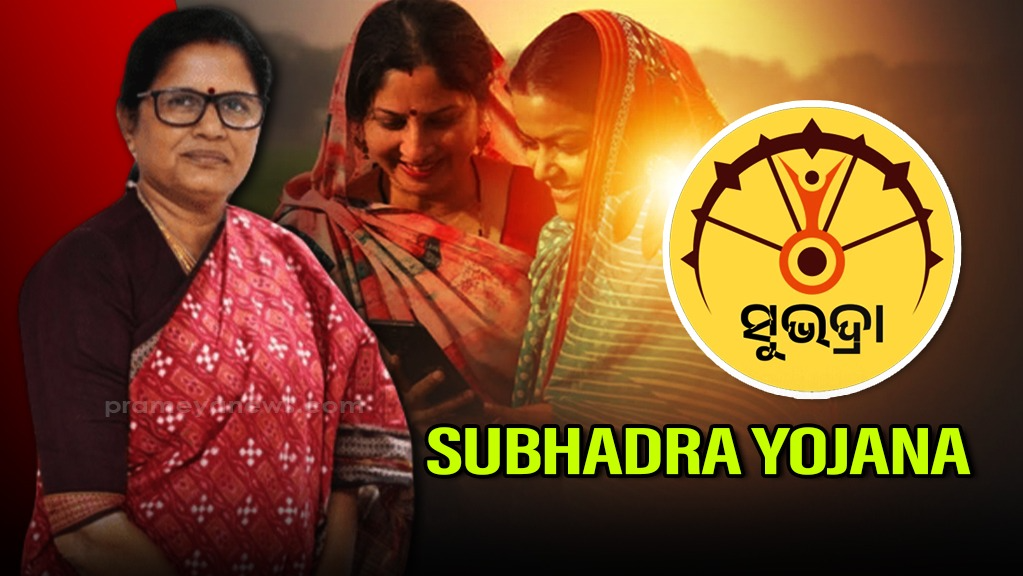PRASANTA KUMAR DASH
Puri, Oct 12: At a time when the Goddess Durga manifests across the nation in many a forms and semblances onn Puja Altars (Pandals), special rituals are customarily performed in the Puri Jagannath temple during the Dussehra and Vijaya Dasami.
Among other regular practices relating to the Shri Jagannath Cult(Jagannath Sanskriti), the Durga-Madhaba ritual and the ‘Sandhi Puja’ rituals are held on the Srimandir campus amid the Navratri, Durga Puja and Vijaya Dasami Festivities which are celebrated with pomp and gaiety in nook and corner, in the Hindu nations especially in Odisha and India as a whole.
The Durga-Madhab puja is celebrated both in the sanctum sanctorum of the presiding Lord that also involves scores of servitors to perform it in the vicinity. However, the Sandhi Puja is a secret ritual of the Goddess Bimala, which is considered as a form of Goddess Durga which is performed by some core serviters late at night in the utter darkness.
The Sandhi Puja, as mentioned by some pundits, is a special ritual to passify the rage of Goddess Maa Bimala, who takes a ferocious and fanatic form during the Durga Puja period. She is satisfied with odd bhogs and Tantrik ways of worships, for her appeasement.
According to ancient scriptures, Shri Jagannath is believed to be ‘Mahayanic Shunya’ and the ‘Advaitic Brahma’. He is a process and a medium for many who worship him in various forms. At the Mula Peetha in Shri Jagannath Dham, Puri the presence of Shri Jagannath as Shiva along with Goddess Bimala as Shakti validates one of the several manifestations of the Lord.
The presiding deity of the Puri Jagannath temple Shri Jagannath – The Lord of the Universe, is accompanied by the guardian deity, Chatur Bhuja – the four-armed Goddess, Adya Shakti- Ma Bimala.
Goddess Bimala represents Prakriti and Shri Jagannath is the representative form of Purusha. Shri Jagannath is Bhairava and Goddess Bimala is Bhairavi, confirming the path of evolution and destruction. Thus, Vimala is considered as Maha Devi and Jagannath as Bhairava. The Prakriti and Purusha are reuinited during the Saradiya Durgapuja, to do away with evil and the wrongdoers, for a peaceful existence of the eternal creations of the almighty.
Goddess Bimala is identified as the incarnation of Katyayani, Durga, Bhairavi, Bhuvaneshvari, and Ekanamsha in various texts and rituals.
As per the Devi Purana, it is believed that when Shiva performed the Tandva holding Sati’s corpse, a part of Sati’s body part fell at Srikshetra in Puri.
The divine spot where the Pada Khanda –the foot of Sati fell is where Goddess Bimala is enshrined within the Jagannath temple at Puri. As described in the Hindu Puranas, Devi Bimala temple is considered one of the Shakti Pithas.
Vijaya Dasami & the Durga – Madhaba ritual a confluence of Jantra, Mantra and Tantra
Durga Puja celebration at the Shri Jagannath temple in Puri uniquely patronizes the worship of Durga-Madhava and is observed for a period of sixteen days. It is believed that the Durga-Madhava worship was initiated in the temple by the orders of Devi Subhadra, an incarnation of Shakti. Devi Subhadra is worshipped with the ekakshara mantra ‘Hrim’.
Some verses (mantras) validate that Devi Subhadra is also conceived as Goddess Bhubaneswari. Goddess Bimala is also worshipped with the same mantra as Devi Bhubaneswari.
Shri Jagannath and Devi Bimala remain in the temple uniquely as Shakti in the form of Mahamaya Durga and Vishnu in the form of Madhava. Together they combine as Durga – Madhava.
The puja offered during these sixteen days is popularly known as Sohala Puja. Beginning from Ashwin Krishna Astami to Ashwin Shukla Navami it is also known as ‘Sakta Gundicha’ or ‘Saradiya Ratha Yatra’.
As per ritualistic practice, after receiving the consent of Devi Subhadra in the form of a flower garland on Ashwin Shukla Saptami, the proceedings for the Sahasra Kumbhabhishekam of Goddess Jayadurga begins.
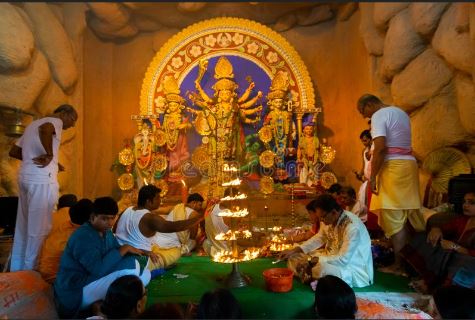
On Ashwin Sukla Ashtami, the gold idol of Devi Jayadurga is placed on the Divine altar – Marjana Mandap. With the consent garland around her neck, Goddess Jayadurga is treated to pious ablution with thousand pots of sanctified water accompanied to the utterance of the Banadurga mantra.
After the completion of the puja rituals of Mahaprabhu on Saptami tithi, the idol of Jayadurga is taken to the sanctum sanctorum and placed in front of Devi Subhadra. After receiving a consent garland from Devi Subhadra, Goddess Jaya Durga is treated to an Abhishek with thousand pots of water.
Post the Sahasra Kumbh Abhisheka, the idol of Devi Durga is taken to the door-step of the Bhandara Ghara. Subsequently, the idol of Sri Madhava is brought from the Ratna Singhasana and He is placed by the side of Maa Durga on a Divine pedestal.
Madhava represents Purusha and Durga symbolizes Shakti, here the two deities join hands together and are known as Durga-Madhava. The idols of Durga and Madhava are taken inside the sanctum sanctorum.
Devi Durga receives the Ajyana Mala of Devi Subhadra and Sri Madhava receives the Ajyana Mala of Lord Jagannath and then the deities proceed to the Jhulana Mandap where they are placed at one place for an audience with the devotees.
After giving Darshan, Durga and Madhava are taken to the temple of Maa Bimala where they are offered oblation and Bhog. The deities are then taken to a place in the Srimandira, known as Mahajana Bhandara.
This ritual is observed daily for a period of eight days in the first phase of Sohlo Puja, beginning from Krusna Ashtami in the month of Ashwin.
In the concluding eight days beginning from Sukla Pratipada to Ashtami, the idols of Durga and Madhava are taken together to the Narayan Temple in Dolamandapa Sahi and all the rituals as observed in Bimala Temple during the first eight days are replicated.
These rituals are observed on all eight days in the second phase of the Sohlo-Puja ritual.
After completion of the Sola Puja ritual, the Idols are finally taken back to the Srimandira on the sixteenth day. On Vijaya Dashami, the last day the images of Durga and Madhava are taken around the temple premises of Shri Jagannath, along with various divine weapons.
Thereafter Devi Durga is placed in Bhandara Ghara and Sri Madhava takes his place on the Ratna Simhasana, to the left side of Sri Jagannath inside the sanctum sanctorum. The Durga-Madhava worship as observed in the Srimandira is popular as Sakta Gundicha.
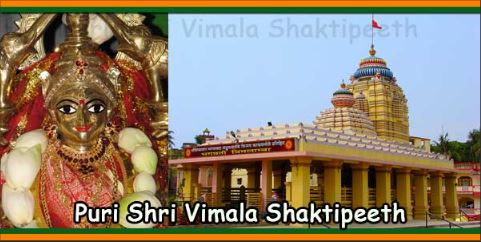
Worshiping Bimala at her Kshetra
The Tantrik manifestation of Goddess Bimala is evident on the days of Saptami, Ashtami, and Navami in the month of Ashwin. It is believed that during the period the compassionate Bimala displays her destructive face to do away with the evils.
During the entire period of the sixteen days, Goddess Bimala is attired in various Veshas of Shakti, displaying the specific incarnations and its mood. The Goddess is considered to be in her most aggressive and powerful form during the Durga Puja.
According to the Devi Bhagavata Purana, In Odisha, the Goddess Vimala is Parashakti and Pureshvari, the foundation of the entire creation of this universe, residing in the city of jewels.
The rituals performed during the Vijaya Dasami period are secretly done by a select group of Sevayats. Maa Bimala assumes her aggressive facet. During the Durga Puja, thus women are restricted from entering the temple amid the Sandhi Puja.
Bimalaparusa – Bimala’s special cuisine is offered to appease the Goddess. On Saptami, Astami, and Navami, during the Durga puja, there is a deviation from vegetarian sattvic food offerings made to the goddess to Non-vegetarian food offerings.
Fish from Markandya Sarovara is made available and is cooked in a makeshift temporary kitchen as per rituals, at a designated place on one side of the Bimala temple. This cooked fish curry is offered as bhog to the Goddess Bimala in accordance with Tantric rituals. The Bimalaparusa is thereafter distributed selectively as per the ancient practices.
A he-goat is brought to be offered to the Goddess. The sacrifice is performed on the Bakula Pindi in the outer premises of the Bimala temple. During the sacrifice rituals and related puja proceedings at the Bimala temple, the doors of Jagannath’s sanctum sanctorum remain locked.
All these rituals of sacrificing, cooking, and offering Nonvegetarian food are performed after Shri Jagannath has been put to sleep at night. These rituals are completed before sunrise ensuring the premises are cleaned up so that Shri Jagannath’s doors can be opened for regular rituals of the Trinity.
Shri Jagannath is Vishnu for the Vaishnavas, Bhairava for the Saktas and Shaivas offers their respect to Him as Shiva. The Ganapatyas offer their devotion to Shri Jagannath as Ganesh. He is Buddha for the Vajrayana Buddhist.
The Puranas confirm the worship of Durga-Madhava and Goddess Bimala as antique and exclusive to the Srimandira. The amalgamation of Sakta and Vaishnav worship during the Durga Puja and on the Vijaya Dasami remains unique to Shri Jagannath Dham, without any replication across the country and even elsewhere in the Hindu-dominated nations in the world.






